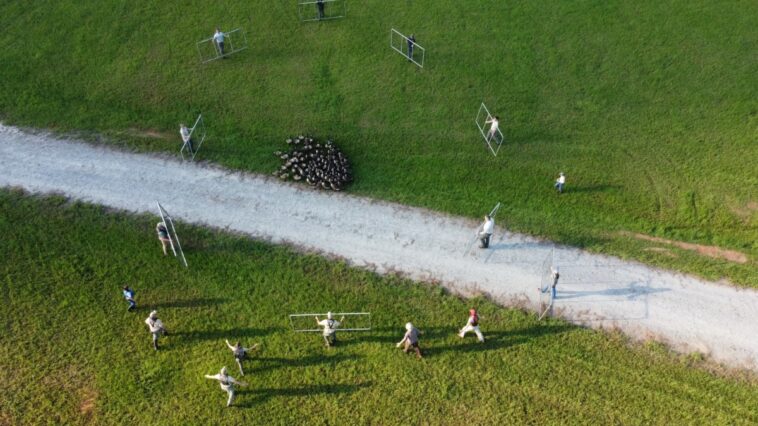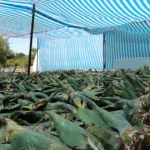An Up-Close Look
There is something strangely beautiful about standing in the middle of Rum Creek Wildlife Management Area in June, camera in hand, trying to capture the perfect moment between geese and biologists! The dramatic flapping of wings and feathers floating everywhere may sound chaotic – and it is – but goose banding is one of those moments that reminds us just how important every piece of Georgia’s wildlife truly is.

What is Goose Banding?
Goose banding literally refers to attaching a metal band to the leg of a goose. Each summer, geese molt, or shed, their flight feathers, making them temporarily unable to fly. This is the perfect time for the Georgia Department of Natural Resources’ Wildlife Resources Division (WRD) to gather data and monitor the overall health of Georgia’s goose population. This action assists in a better understanding of goose population numbers, allowing WRD to make future management decisions.

Wildlife biologists and technicians prepare their gear to begin Goose Banding at Rum Creek WMA. (DNR)
How does it work?
When geese are unable to fly, wildlife biologists and technicians take to the water in boats to gently guide them toward the shoreline. Waiting on land, more biologists and technicians stand ready with large mobile panels equipped with nets on all sides. These panels help safely herd the geese into a manageable group without causing harm.
Once gathered, each goose is carefully examined for a numbered aluminum leg band. If a band is already present, the identification number is recorded, and the goose is released. If the goose does not have a band, one is applied, its age and sex are determined, and then it is released back into the wild to continue its summer routine.

Bands for geese. (DNR)

WRD staff carefully apply a leg band to a goose. (DNR)
Why is it important?
Goose banding is far more important than just catching and tagging birds – it is an essential conservation tool. With these unique bands, wildlife biologists can track individual geese over time. This data helps us answer important questions such as:
- How long do geese live in the wild?
- Where do they migrate? (If at all)
- How many geese survive each year?
- Are populations growing, stable, or declining?
These data points directly influence management decisions, including setting hunting regulations, protecting habitats, and how WRD responds to disease outbreaks. Without this valuable information, WRD wouldn’t be able to offer hunters the maximum amount of hunting opportunities or have the ability to issue nuisance goose permits to those who are experiencing goose problems in certain areas.

Band information is being recorded from a previously banded goose. (DNR)
What can you do?
Each tiny leg band plays a big role in shaping the future of Georgia’s geese. From guiding hunting regulations to conserving Georgia’s wildlife, these bands are the link between good science and effective game management.
So, the next time you see a goose with a band, remember the story it tells – a story of teamwork, science, and conservation. If you are a hunter and harvest a banded goose, you can report the band number to the USGS Bird Banding Lab at www.reportband.gov. In return, you will receive a certificate with information about where and when that goose was banded – a meaningful connection to the conservation work happening all around you.
How can you help ensure that conservation work can continue? Buy a hunting or fishing license at GoOutdoorsGeorgia.com. Your license purchase helps provide funding for research and surveys, building and maintaining public resources like shooting ranges, conducting habitat restoration and more. Thank you for your support!




GIPHY App Key not set. Please check settings